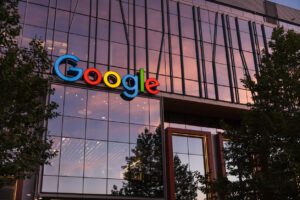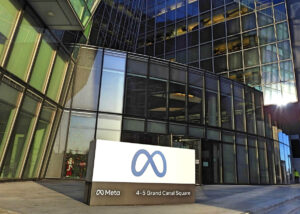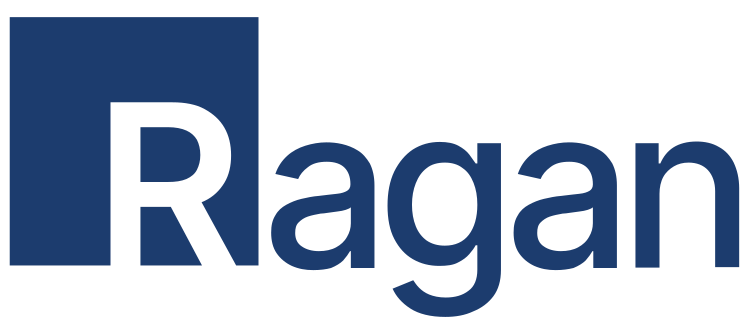Disaster comms lessons from the LA fires; McDonald’s is scaling back its DEI aims
Plus, JP Morgan calls employees back to the office full-time.

Greetings, comms pros! Let’s look at a few news stories from the past week and see what we can learn from them.
1. Fires rage through Southern California as over 100,000 evacuate their homes
Major wildfires continue to burn out of control across the Greater Los Angeles area, forcing over 100,000 metro area residents to evacuate. The wildfires have also forced major disruptions in the city’s lifeblood, the entertainment industry, with awards shows and premieres being canceled out of caution. HBO and MAX released a statement on their decision to cancel the premiere for “The Pitt,” recognizing first responders and the safety of those in the area.
“Out of an abundance of caution due to the ongoing Palisades Fire and continued wind advisories through tomorrow, we are canceling Wednesday’s premiere event for ‘The Pitt.’ The safety and well-being of our attendees, staff, and community are our top priority. We are grateful for the first responders bravely working to protect our community, and our thoughts are with those affected. Stay safe!”
During natural disasters like these wildfires, it’s key for communicators to ride the line between an informational and empathetic messaging. Late last year, we spoke with Ashley Bush of Southwire about how her team responded to the impacts of Hurricane Helene across the Southeast. Her best practices, which apply across a range of disaster scenarios, included:
- A robust intranet can help reach people efficiently. A company’s intranet can serve as a hub for updates on the company’s response to a disaster and directions for employees following evacuations or closures. “It gives us a timely way to reach people transparently and meaningfully,” Bush said. “Additionally, the information available to them is customized based on what their role is and where they’re located.”
- Share safety measures via all available channels. Providing safety tips to your employees isn’t just a great way to show you care about them — it can help inform them from a trusted source since the majority of employees place a great deal of trust in their employers. That means sharing information from local authorities on safety best practices. Additionally, using all the channels you have at your disposal maximizes the potential reach of important messaging.
- Communicators can provide pathways to help. Even in the bleakest times, stories of comebacks after a disaster are welcome. Share the news about the disaster, but also share how people are overcoming it when applicable. “Beyond just providing the news, we wanted to show our people that there were ways to help,” Bush said of her team’s response to Helene.
2. McDonald’s retires some diversity goals, citing affirmative action decision by the Supreme Court
Fast-food giant McDonald’s is scaling back on some of its DEI commitments while affirming its commitment to “inclusion” in a memo to franchisees. In the note, McDonald’s wrote:
“Inclusion” is one of our core values and in 2024 “we opened our doors” to hundreds of millions of customers and two million crew people from all walks of life. Everyone is welcome under our Golden Arches, and this broad-based appeal is why McDonald’s is one of the world’s most beloved brands. We’re proud of our culture at McDonald’s, and we want to thank all of you for living our values.
Simultaneously, McDonalds also announced changes to its DEI efforts, including the retirement of representation goals and a greater focus on business performance within its “inclusion” pushes.
The move by McDonald’s follows the trend of DEI work being either scaled back or renamed following public backlash from certain corners of society. But even under another name, inclusion work, as McDonald’s terms it, remains important.
McDonald’s narrowing in their inclusion is also notable, specifically in how they talk about it. Rather than eschewing inclusion entirely, they redefine it as an internal focus rather than an external one. The memo highlights highs in diverse leadership and a closing gender pay gap, undeniably accomplishments in inclusion. But if it remains a pillar of the business, it needs to be communicated to the people who give the company its identity. Don’t just say that your company appreciates employees; prove it through communicated reminders and actions that lean into that appreciation, including improved compensation and leadership opportunities.
3. JP Morgan mandates a five-day in-office workweek
Add JP Morgan to the list of major companies calling their employees back to the office full-time. According to a report from Bloomberg, the financial services firm plans to replace its three-day hybrid schedule with the full-time attendance policy it maintained before the pandemic. The move follows derisive comments about remote work from JP Morgan CEO Jamie Dimon, claiming “five is right” in terms of the proper amount of days in the office.
Rolling out a return to office is fine in and of itself, but it’s important for companies that choose to do so roll out the RTO process properly. Last year, we wrote about how the key steps to any RTO is centered on cultural alignment. It remains to be seen how JP Morgan will talk about the process internally, but when asking employees to come back to the office, communicators should be sure to remind employees that their contributions are valuable, that they’re part of an organization that’s doing important work, and that the cultural benefits of being in the office will be easily seen. Additionally, creating a space for two-way dialogues about RTO helps show that organizations are invested in every employee, even those who might not agree with the decision to go back to the office every day at the outset.
Additionally, the leadership communication piece of the puzzle bears importance. Jamie Dimon has been pretty outspoken about his dislike for remote work for a while now, going as far as to say that people who stick to remote work don’t need to work at JP Morgan. “I completely understand why someone doesn’t want to commute an hour and a half every day, totally got it. Doesn’t mean they have to have a job here either,” he told The Economist last year.
It’s not just what your leaders say about remote work; how they say it matters too. Employees are perceptive and the conversation around RTO and remote work reflect a company’s culture and employer reputation. Bear that in mind when counseling leaders about how to talk about RTO.
4. How about some good news?
- American news outlets are deleting old crime stories, allowing a “right to be forgotten.”
- Coffee and tea consumption has shown a link to lessened risk of head and neck cancers.
- Research has found one of the key aspects of learning a new language is proper sleep.
- Ragan Training is great for communications pros to find inspiration and resources.
- You should be rewarded for your work. Find out how to earn an award here!
Have a great weekend comms all-stars!
Sean Devlin is an editor at Ragan Communications. In his spare time he enjoys Philly sports, a good pint and ’90s trivia night.







